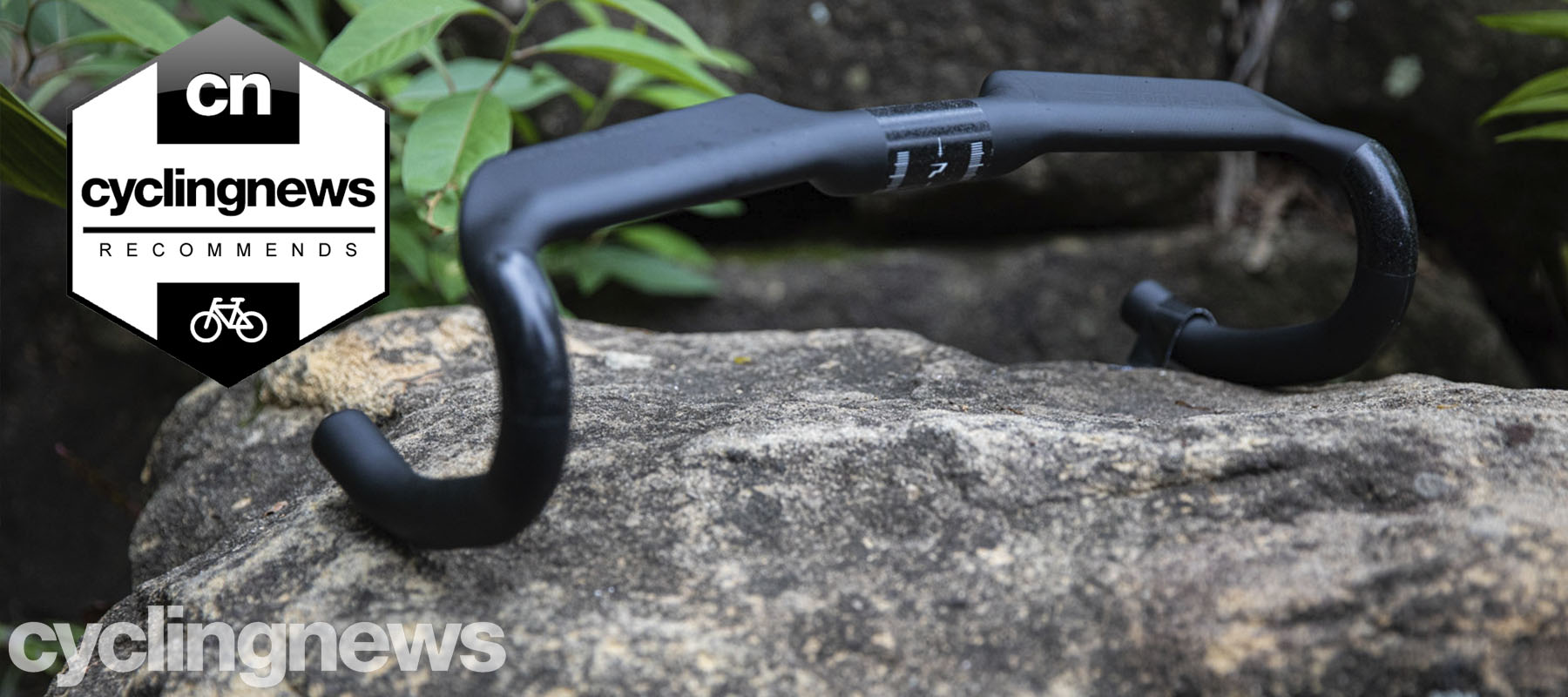Cyclingnews Verdict
We don't know how aero the Prime Primavera bars really are but they're well finished and the ergonomics promote an aero body position
Pros
- +
'Triangular' drop design
- +
Cable routing easy to live with
- +
Textured tops
Cons
- -
No specific aero claims
You can trust Cyclingnews
Prime are a small carbon components brand, that is sold through Wiggle/Chain Reaction Cycles. The vast majority of its catalogue is made up of wheels but it also offers cockpit components, with the Primavera being the brand's only carbon offering. The Prime Primavera Aero is, as the name suggests, the aerodynamically optimised bar in the range.
With the continued focus on saving drag everywhere possible, we are seeing cables running internally from the lever all the way to their destination. Bike and component brands tell us this saves you a whole heap of energy as you slice through the wind on the bike, but more than anything, it cleans up the front end of the bike; but it does also make them harder to work on.
These Primavera Aero bars have all the hallmarks of the carbon aero bars we've seen permeate the front end of race bikes at all levels, but do they stack up among the best road handlebars?
Design and aesthetics
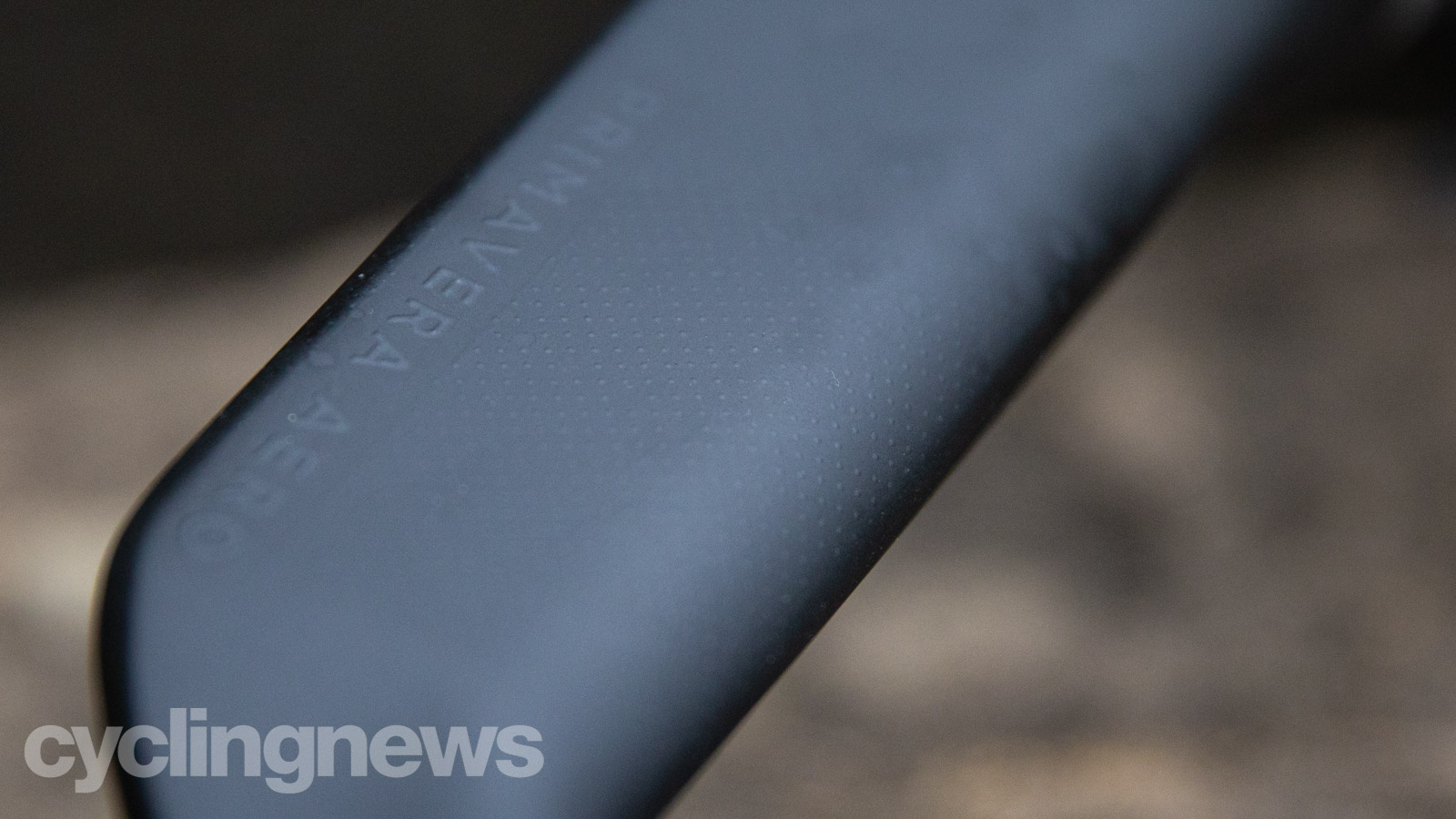
While Prime labels these as aero bars, they don't actually make any claims about watts saved over a 40km TT, or any of the usual declarations that we have no way to confirm without access to a wind tunnel. I would speculate that these are, in fact, a bit more slippery than a standard set of round bars, but it's nothing more than a gut feeling.
The bars have all manner of internal cable routing for both mechanical and electronic drivetrains, with holes in the drops, hoods tops, and rear of the stem clamping surface offering plenty of freedom for the bar to seamlessly integrate into your frame's cable management.
With this style of bar, the tops are designed to be left bare to maximise any potential aero advantage. To compensate for some of the lost grip by not adding bar tape, Prime has lightly textured the surface. It doesn't add to the same level of purchase you'd get with the best bar tape but it's better than the smooth, sometimes polished surface you'll find on similar aftermarket bars from Zipp, Enve or 3T.
With a 125mm reach and 78mm drop, the bars see a 4-degree outward flare and are available in sizes from 38-44cm. Our size 40cm sample bars weigh in at 267g.
Setup and ride experience
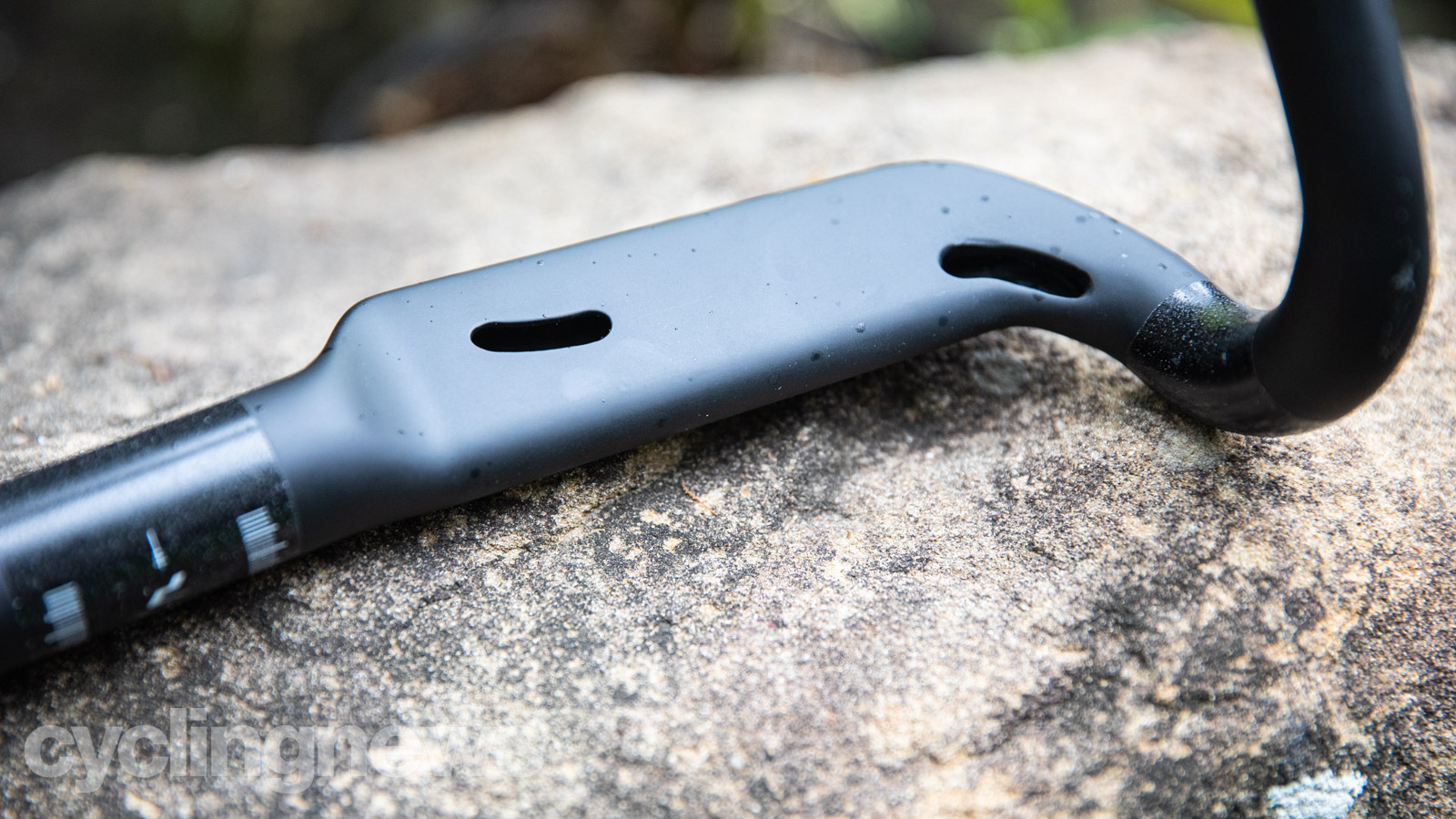
With any set of handlebars that routes the cables internally, the ease of setup is of equal importance to the actual ride quality. Here, Prime has hit a home run.
There are no sharp bends for stiff hydraulic hoses to navigate, nothing rattles, and the entry and exit holes allow plenty of space to sneak a pick or looped zip tie through to snag inners and outers and guide them to their exit.
The clamp mounting surfaces are textured so there is no need for carbon paste, and the stem clam has plenty of markings to ensure your bars in level and centered.
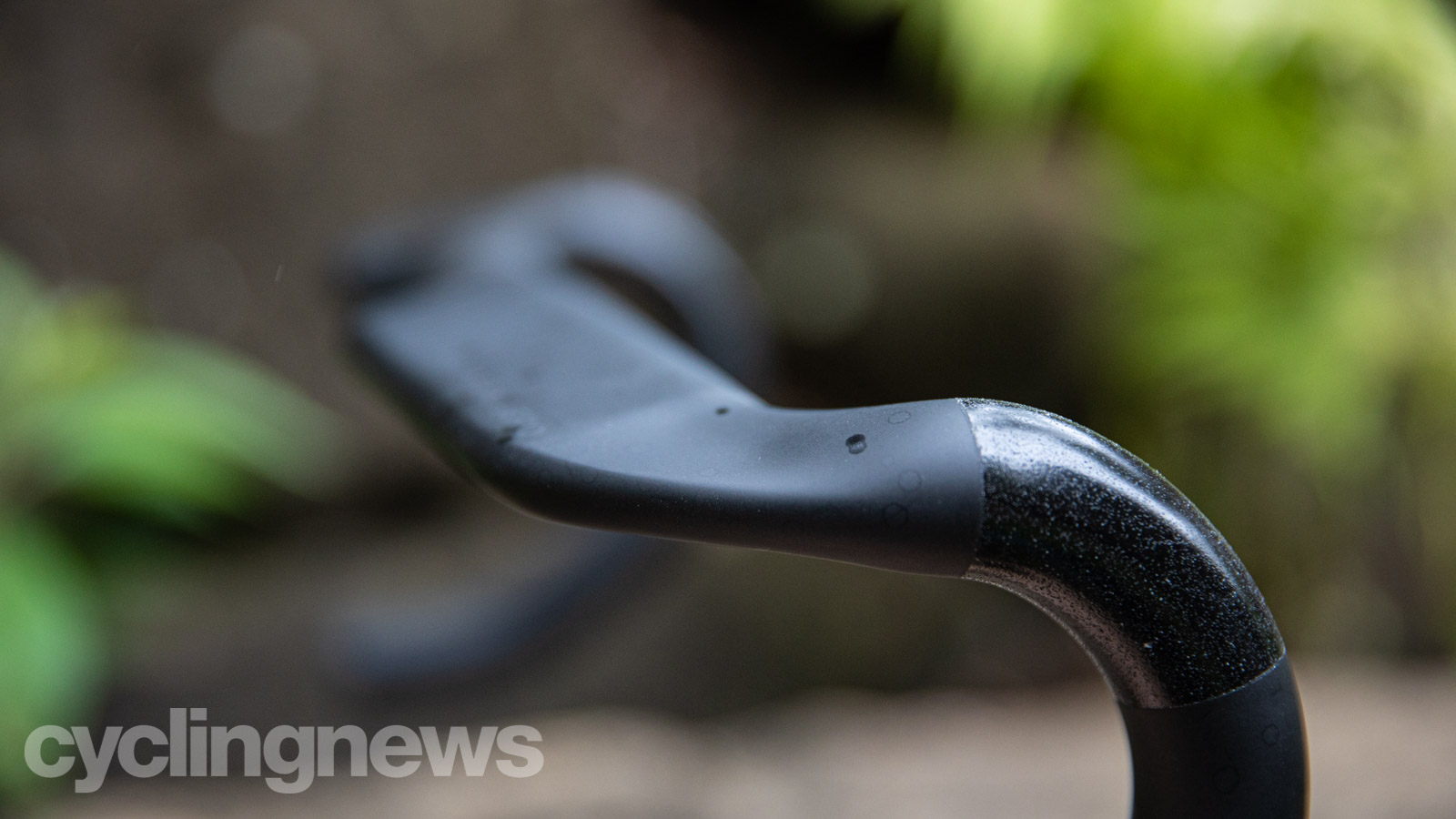
One of the defining features of these bars is the shaping on the hoods and in the drops. On the previous version, the latter was aggressive, locking the heel of your hand into the bar, providing support and control when riding with your elbows down. It also caused plenty of mounting issues with SRAM levers. It seems Prime was paying attention to online reviews, as the newly updated version sees the size of the scalloped section reduced and moved back on the bar, and I had no issue getting an older set of SRAM Red 10-speed levers as well as Shimano Ultegra levers in my preferred position.
While this indent on the hoods has been reduced in size, even when covered with bar tape you can still tell it's there. It feels like it places your hand inside the bar for added control and better distributes the pressure on the heel of your hand than a traditional round-topped bar.
At first glance, the Primavera bars appear to have your standard compact drop; however, once you grab them, it's clear there is a bit more going on here. Prime calls this is Triancular drop design, which sees the bars taper in just below the levers and a flat kick in the bend just the bottom, similar to the Pro Vibe Carbon Aerobars.
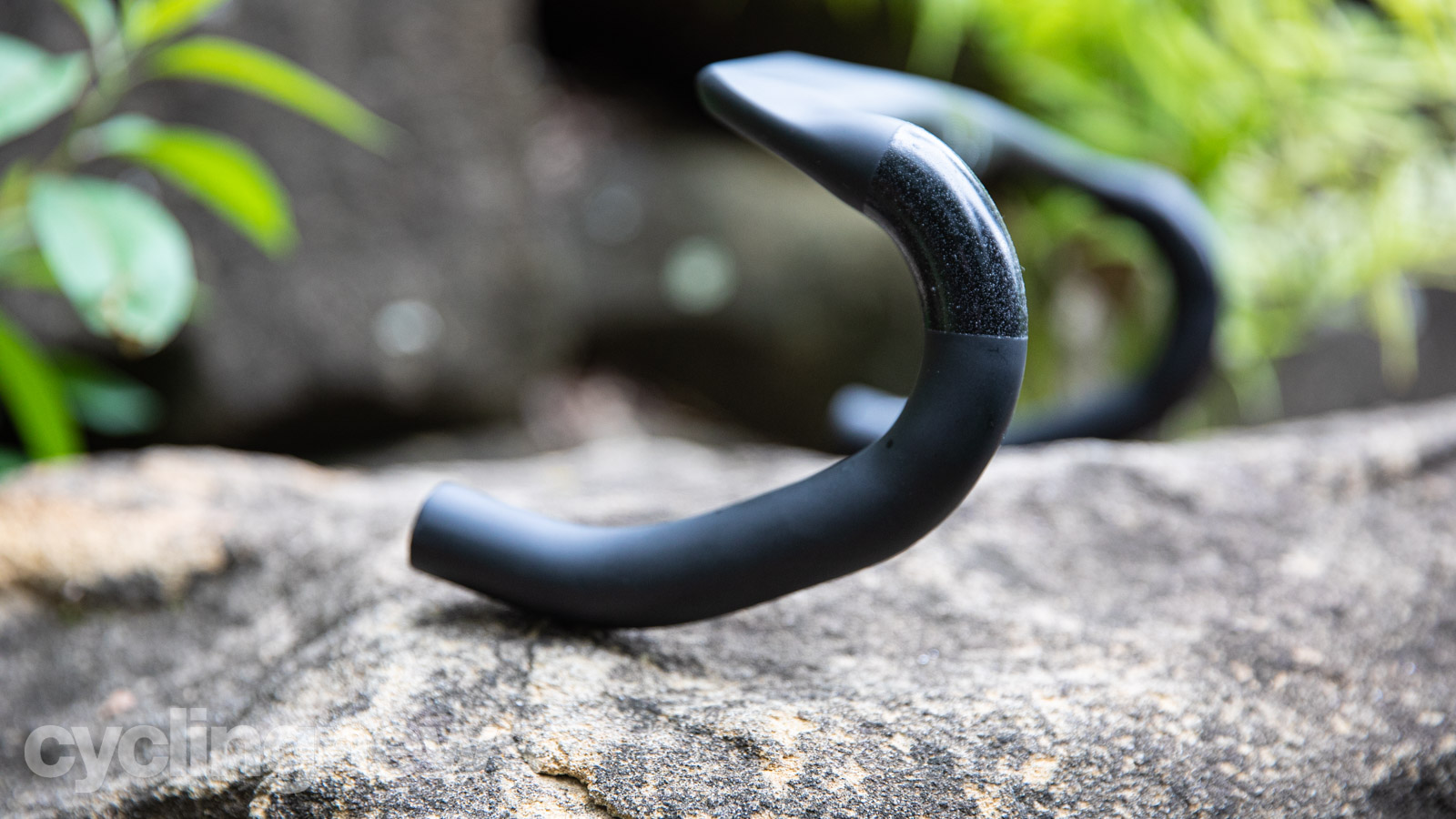
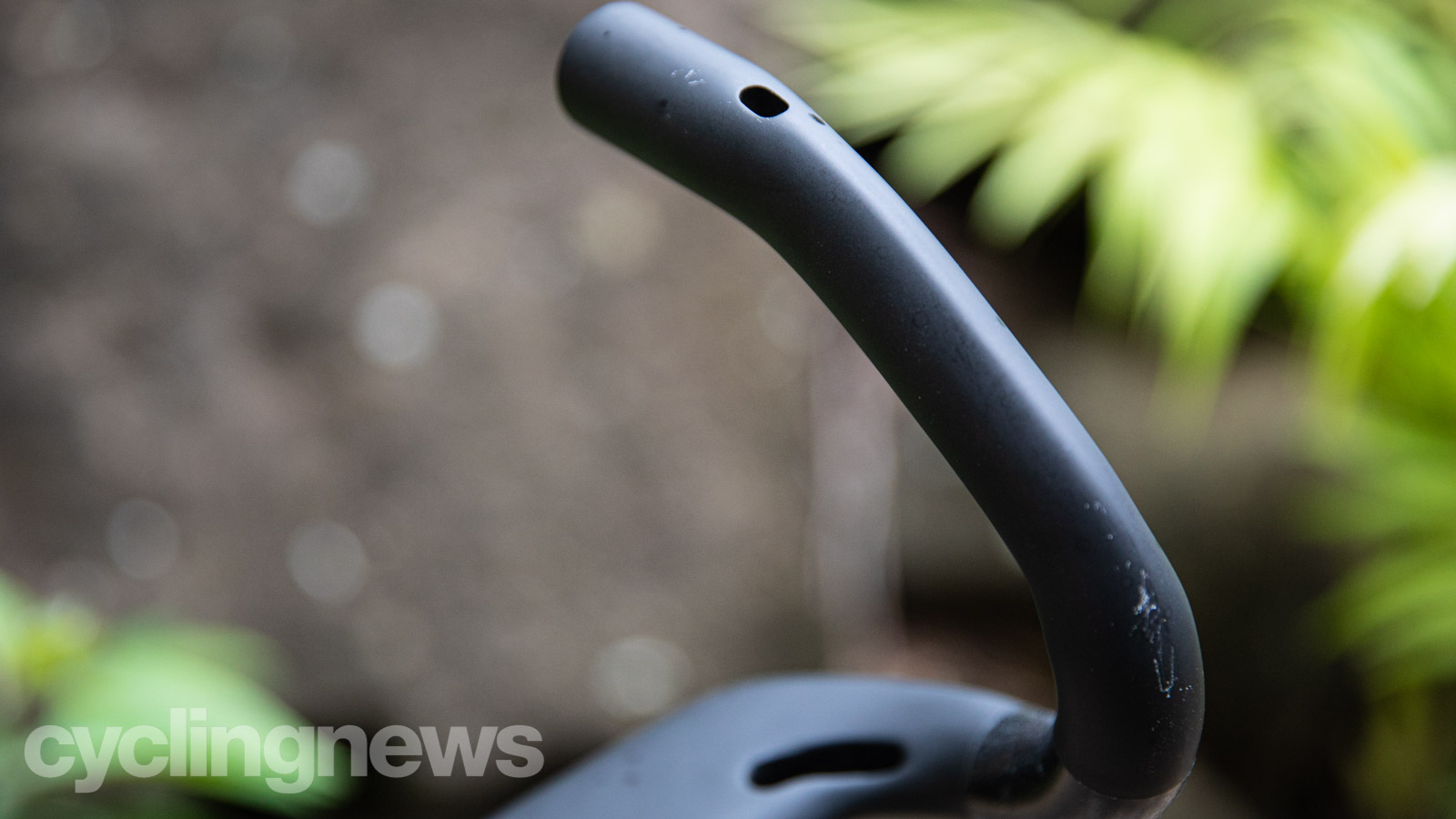
This causes your hands to settle in up and under the drop, where you can reach the lever and facilitate bent elbows to help you get low and aero. The kick in the bottom of the drop gives the heel of your hand something to rest on and takes some of the strain off your triceps. The pointed section profile of the drop is surprisingly ergonomic in your hands.
As I mentioned before, I have no way to verify whether the shaping of the tops makes these bars more or less aero than a standard bar. They do gently promote a more aero body position in the hoods and drops, using the shaping of the bars to encourage bent elbows, which pulls your chest out of the wind.
For when you're just riding along the broad flat profile of the tops allows plenty of surface area to distribute the pressure across your palm, and is even more comfortable if you don't leave them bare. The foil also leaves enough clearance around the stem clamp to accommodate computer and light mounts without issue.
Verdict
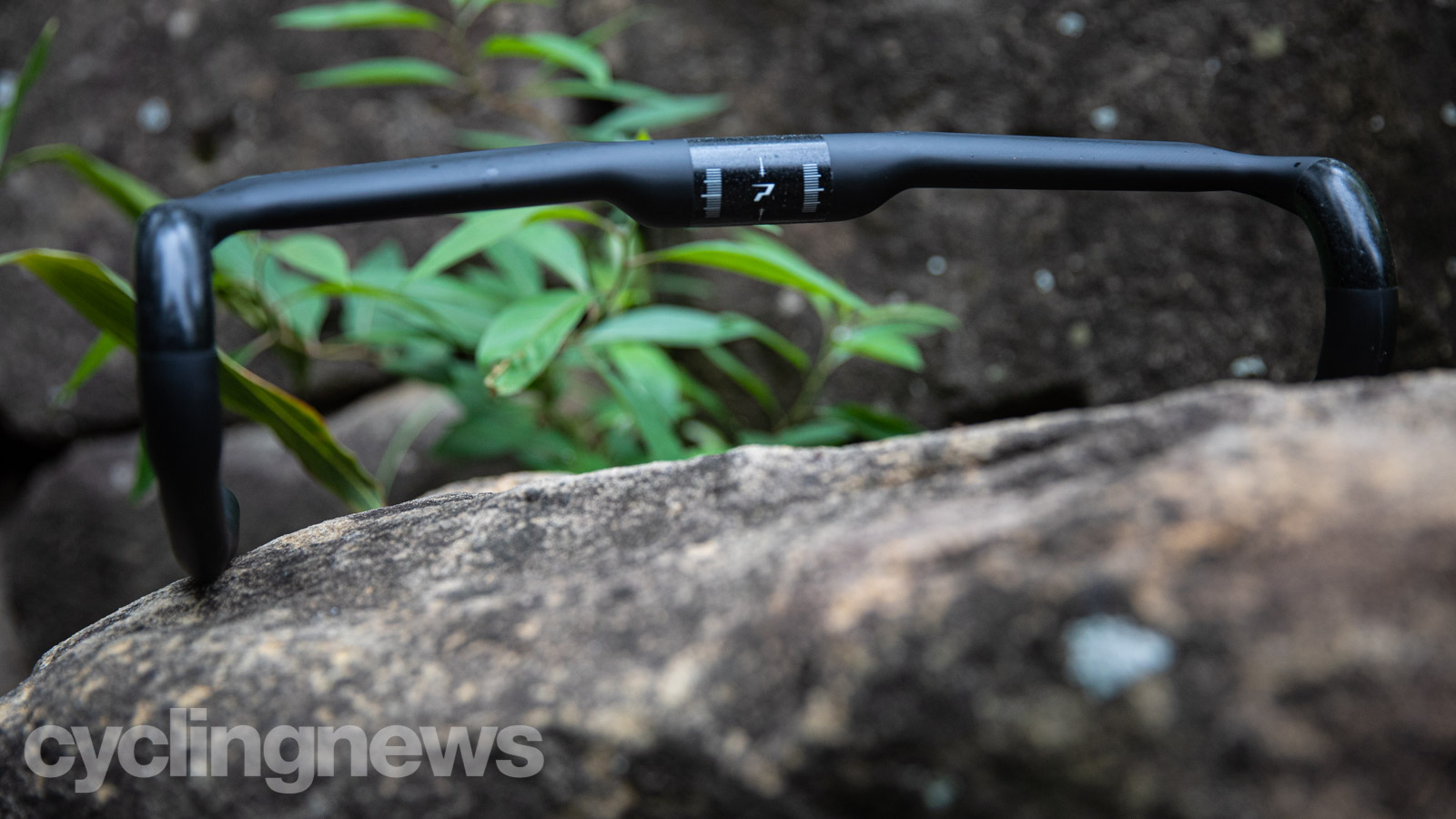
These are carbon bars so they should plenty stiff even when you're wrenching on them as you grind up a climb or sprint for a light or town sign. They also silence road buzz before it can reach your hands and this is the most essential attribute of any carbon bar.
Given how many hours I've spent feeding cables, housing and hydraulic hose through 3T, Vision, and Easton handlebars, the way the Prime handled cable management was refreshingly simple. The brand has also addressed the widely mounting reported issues with SRAM levers.
Carbon aero bars are a dime a dozen nowadays and, while the shaping and ergonomics of the Prime Primavera are not entirely unique, they are well executed and easy to live with. It is better still, priced at $200 / £140 / AU $252; they are vastly cheaper than similar options from bigger brands.
Tech Specs: Prime Primavera Aero handlebar
- Material: Carbon
- Sizes: 400, 420, 440mm
- Diameter: 31.8mm
- Bend: 4-degrees (Outward bend)
- Weight: 235g (420mm)
Based on the Gold Coast of Australia, Colin has written tech content for cycling publication for a decade. With hundreds of buyer's guides, reviews and how-tos published in Bike Radar, Cyclingnews, Bike Perfect and Cycling Weekly, as well as in numerous publications dedicated to his other passion, skiing.
Colin was a key contributor to Cyclingnews between 2019 and 2021, during which time he helped build the site's tech coverage from the ground up. Nowadays he works full-time as the news and content editor of Flow MTB magazine.
